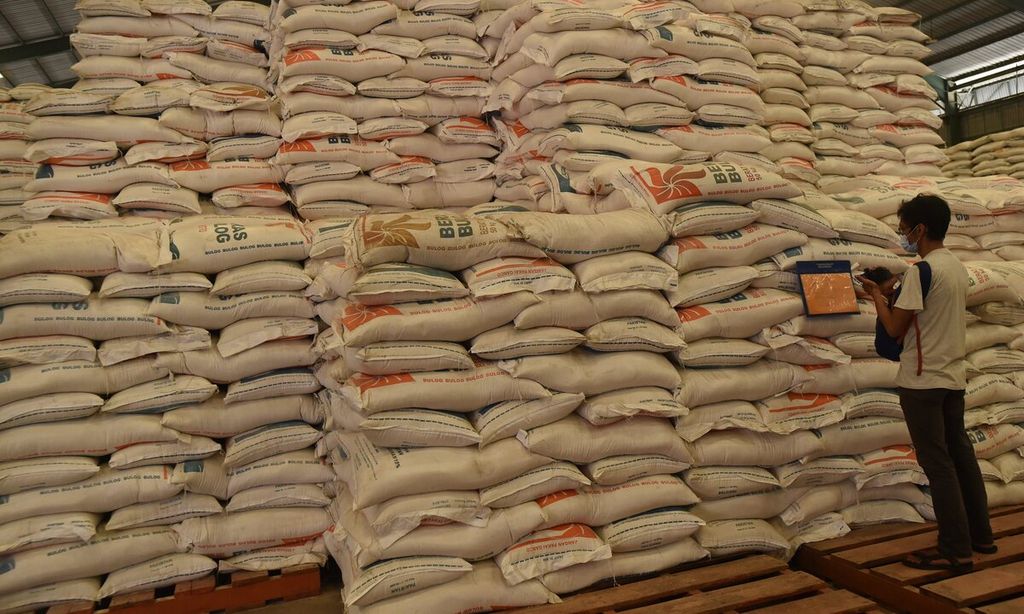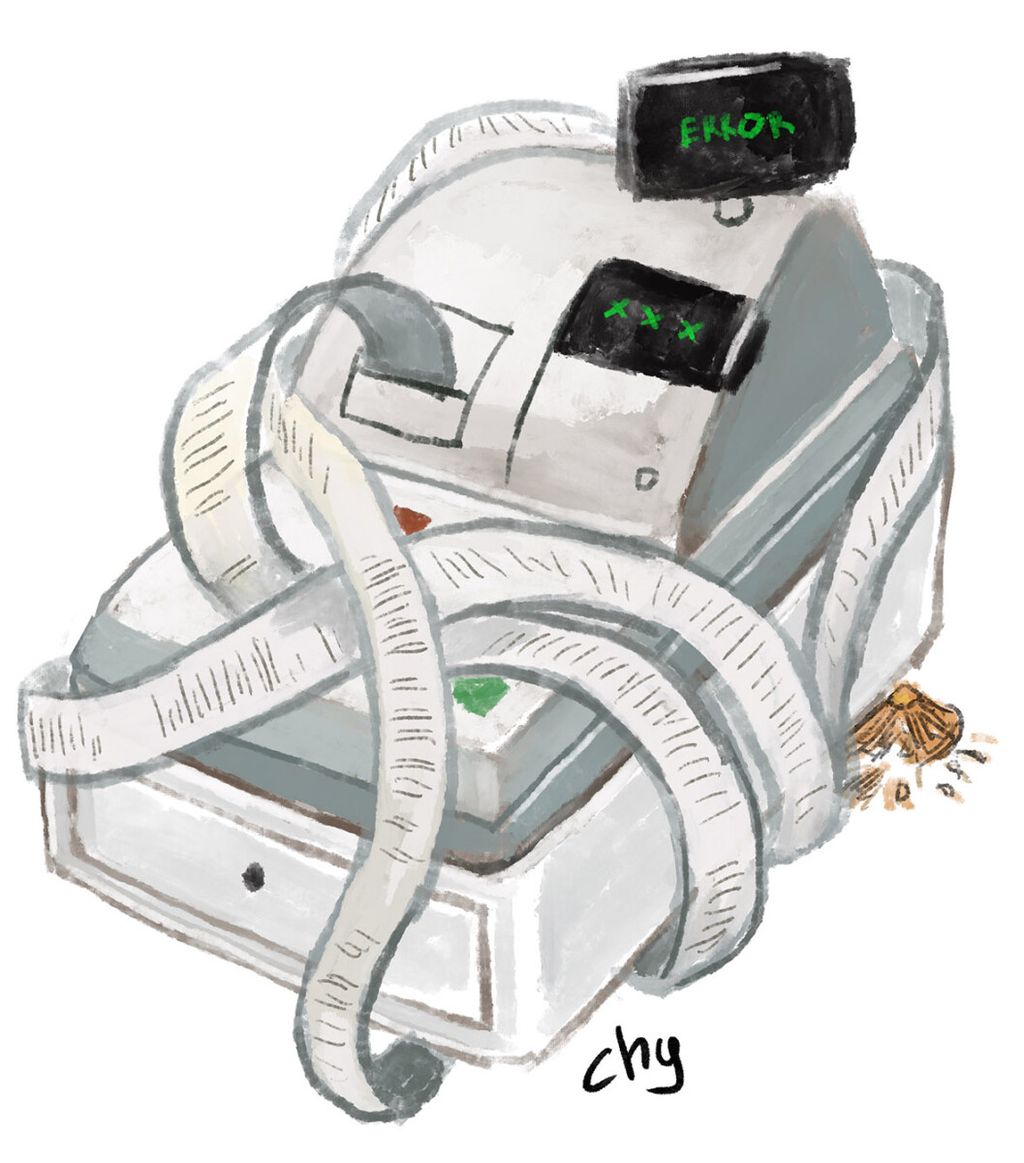Rice Imports and Government Stocks
Responding to the commotion over the plan to import one million tons of rice, President Joko “Jokowi” Widodo finally intervened to explain that there would be no rice imports until June 2021.

After two years without any news about rice, the public was suddenly shocked by the issue of the plan to import one million tons of rice, which the President later denied. What is going on?
This article will explain the problem of managing rice imports and managing government rice stocks (CBP). Since rice imports are one of the instruments for replenishing the government rice stocks, we will first explain the terms of stocks, rice stocks and national rice stocks.
Also read: Questioning Rice Import Plan
According to Kamus Umum Bahasa Indonesia (General Indonesian Dictionary -- Badudu and Zain, 1994), a stock is something that is provided and will be used in the future. Thus, rice stocks are supplies of rice for tomorrow\'s needs, the day after tomorrow, and so on, both those in society and those under government control.
With regard to rice stocks, there is a national rice stock (CBN) that is a combination of community rice stocks (CBM) and government rice stocks (CBP). The community rice stocks and government rice stocks are a complementary logistics chain. If there are sufficient community rice stocks, the amount of government rice stocks can be minimal and vice versa. Therefore, monitoring the position of community rice stocks is an important activity. Currently there is no institution that seriously monitors and coordinates them in a systematic and sustainable way.
The position of the national rice stock is dynamic, subject to change, depending on the harvest pattern and harvest condition, initial supply in the community, community expectations of market condition, natural and pest disturbances (flood/drought), as well as the world rice market condition.
Also read: Addiction to Food Imports
Therefore, the national rice stock can be different every month. However, according to experience, the national rice stock "should" be in a maximum position on Dec. 31, then at least on March 31, and Sept. 30 is the optimal position to face the dry season in the next 4-5 months.

Piles of imported rice from Pakistan that arrived in 2018 at the Bulog Warehouse of the East Java Divre in Buduran District, Sidoarjo Regency, East Java, Thursday (25/3/2021).
The community rice stocks consist of rice reserves in consumer households (line one), retailers, wholesalers and large-scale traders (line two), as well as those in grain collectors and mills (line three), excluding those in the farmers themselves and in the fields to be harvested.
The most critical condition of the community rice stocks is in December, in this case it is necessary to know whether the next harvest will be backward or forward, which can be predicted 2-3 months in advance.
There are also other influencing factors, such as changes in government policies in terms of rice distribution which have resulted in changes in the pattern of rice supply in the community, such as the replacement of the Rastra program (rice for prosperous families) to non-cash food assistance (BPNT) or the number of in-kind social assistance programs (bansos) 2020.
Also read: Food Industry Road Map
The definition of the government rice stocks itself consists of iron stock whose amount is fixed at any time and a commitment stock, namely a certain amount of distribution in the context of inventory turnover so that the goods are not damaged.
After the Raskin/Rastra distribution program in the form of in-kind was totally stopped in 2018 -- previously it was a regular distribution of the State Logistics Agency (Bulog) -- the operational configuration of the government rice stocks has changed.
For this reason, on Oct. 27, 2018, a new scheme for the procurement and management of rice stocks was made, where in principle Perum Bulog can carry out purchases and sales continuously, even being ordered to conduct massive market operations. Therefore, the understanding of the iron stock and commitment stock is unclear. Likewise, the term market operation becomes imprecise, it may become release stock or market injection.

Management of rice stocks
The problems of managing rice stocks that will be discussed here are, first, how to determine the amount of supply for rice stocks. Second, how to manage rice imports so as not to disrupt domestic production.
First, after we achieved rice self-sufficiency in 1984, the 1985 and 1986 supplies continued to grow. For this reason, disposal stock was required, among others by way of export, although at a loss.
Then in 1986 the distribution of financing obligations was formulated, where one million tons for iron stock were financed by the government, 1.5 million tons of operational stock were financed by Bulog, and if at the end of September the supplies exceeded 2.5 million tons -- called surplus stocks – they were financed by the government.
Furthermore, when we faced the long drought in 1987, it turned out that we had to import rice again. Finally, President Soeharto asked for an appropriate measure of rice availability. Head of Statistics Indonesia (BPS) Azwar Rasyid conveyed a formula on July 23, 1988 regarding the Balance of Rice Production and Consumption.
Also read: President Jokowi Guarantees Absorption of Farmers’ Harvests
This was done by making a "correction" of gross production by 11 percent for seeds, loss/damage, for animal feed. Then the net production figure was obtained which, if divided by the number of population, showed the figure of "available consumption" per capita per year at 146.83 kilograms. Based on the BPS formula, if we used it to analyze the data when we achieved rice self-sufficiency in 1984-1993, we would find a figure of rice production per capita of 163.83 kilograms. After being added with imports and subtracted by exports, the available per capita figure was 163.56 kilograms.
If the data was corrected by 11 percent, the availability of rice would be 145.45 kilograms per capita per year or 12.12 kilograms per month (rounded off to 12 kilograms). This figure is used as the benchmark for the provision of national rice needs. Provision of national rice is no longer calculated by calculating production minus consumption because there must be rice stocks that need to be taken into account.
/https%3A%2F%2Fkompas.id%2Fwp-content%2Fuploads%2F2021%2F03%2F1100efb3-ac0a-47a0-975f-a5c0c0359709_jpg.jpg)
The officer shows the condition of the remaining imported rice in 2018 at the Bulog Warehouse, Pekalongan Branch, Munjungagung Village, Kramat District, Tegal Regency, Central Java, Tuesday (23/3/2021). The imported rice, which is almost three years old, has started to turn yellow, dusty, and smells musty.
If we use this benchmark, an estimate of the total availability of rice stocks in 2021 can be made. With a projected population of 273,984 million people, the national rice stock in line one (consumer households) is 12 kilograms multiplied by 273,984 million, namely 3.288 million tons of rice.
Furthermore, for the sake of the continuity of supplies to be maintained, supplies in line two (distribution sector) must also be available in the same amount. Likewise, in line three (processing sector) the same amount must be available. Therefore, the estimated national rice stock needs are 3 x 3.288 = 9.864 million tons.
As a comparison of the results of the BPS survey on the Study of Rice Stocks in 2015, for the position on March 31 it was 7.97 million tons, then on June 31 it was 10.02 million tons, then on Sept. 30 it was 8.85 million tons.
Also read: Farmers’ Anxiety over Low Unhusked Rice Prices
With a similar method, if it was used to analyze the balance of rice availability in 2018, 2019, and 2020 as long as the rice production was considered to be in a position of net production, the results of the writer\'s calculation showed that the average availability figure was 152.7 kilograms per capita and the supply position on Dec. 31, 2020 was amounting to 8.82 million tons (one million tons was in Bulog and 7.82 million tons were in the community).
The condition of the supplies at the end of 2020 which was lower by one million tons, namely 9.86 minus 8.82 million tons, might be a consideration for the import plan.
/https%3A%2F%2Fkompas.id%2Fwp-content%2Fuploads%2F2021%2F03%2F20210322GER_Beras-Sisa-Impor-2018-2_1616394758.jpg)
Head of Bulog Ketapang II Warehouse Ashadi examined the condition of the remaining 2,200 tonnes of imported rice in 2018 which are still stored in Bulog Ketapang II Warehouse, Banyuwangi, Monday (22/3/2021).
Management of rice imports
Second, the management of rice imports in the context of strengthening the government rice stocks. In the case of rice imports, the reason used by the government is usually to strengthen the government rice stocks. The problem is the fact that the amount of the government rice stocks that the government wants is not clear.
According to information, the government rice stocks were approved at 1.5 million tons, but it is not clear whether this is iron stock or one year\'s turnover. As it seemed that the government was also hesitant to finance the government rice stocks of 1.5 million tons using the prepaid system, in the end the government only bears the price difference between the price of goods and the selling price (so the system is postpaid).
Therefore, physically there is no government rice stock, but only a commitment stock and its purchase is also funded by Bulog first. Without any fixed disbursement, the planning and its execution become complicated.
Also read: Don\'t Make the Farmers Depressed
Since 2015, the decision to import have tended to be late, made before the harvest and the shipment of rice also did not consider the inputs from domestic procurement. As a result, the supply turnover becomes complicated, even though completing the old rice supply was very difficult. It was suggested that the old rice stock could be auctioned off by the auction house. Here it must be clear who bears the losses? If the government is not willing to bear the losses, distribution should still be revived.
Regarding the management of the timing of rice imports, the actual indication whether imports are needed or not could have been detected in July based on the realization of domestic procurement and other considerations.
Furthermore, the need for rice imports is confirmed in September. This is indeed not an easy task, therefore it is recommended that a government institution be formed to specifically handle, coordinate and monitor the food stocks. In the past, the dual function as a regulator and operator, monitoring and coordinating the rice stocks was carried out by Bulog. The other important thing for the management of rice imports is to know the character of the cooking of the rice to be imported.

Sapuan Gafar
President Jokowi\'s decision to postpone rice imports until June 2021 is a great relief, but there are still many lingering issues that need to be resolved and agreed upon.
Sapuan Gafar, Former Deputy Chairman of State Logistics Agency (Bulog)
This article was translated by Hyginus Hardoyo.